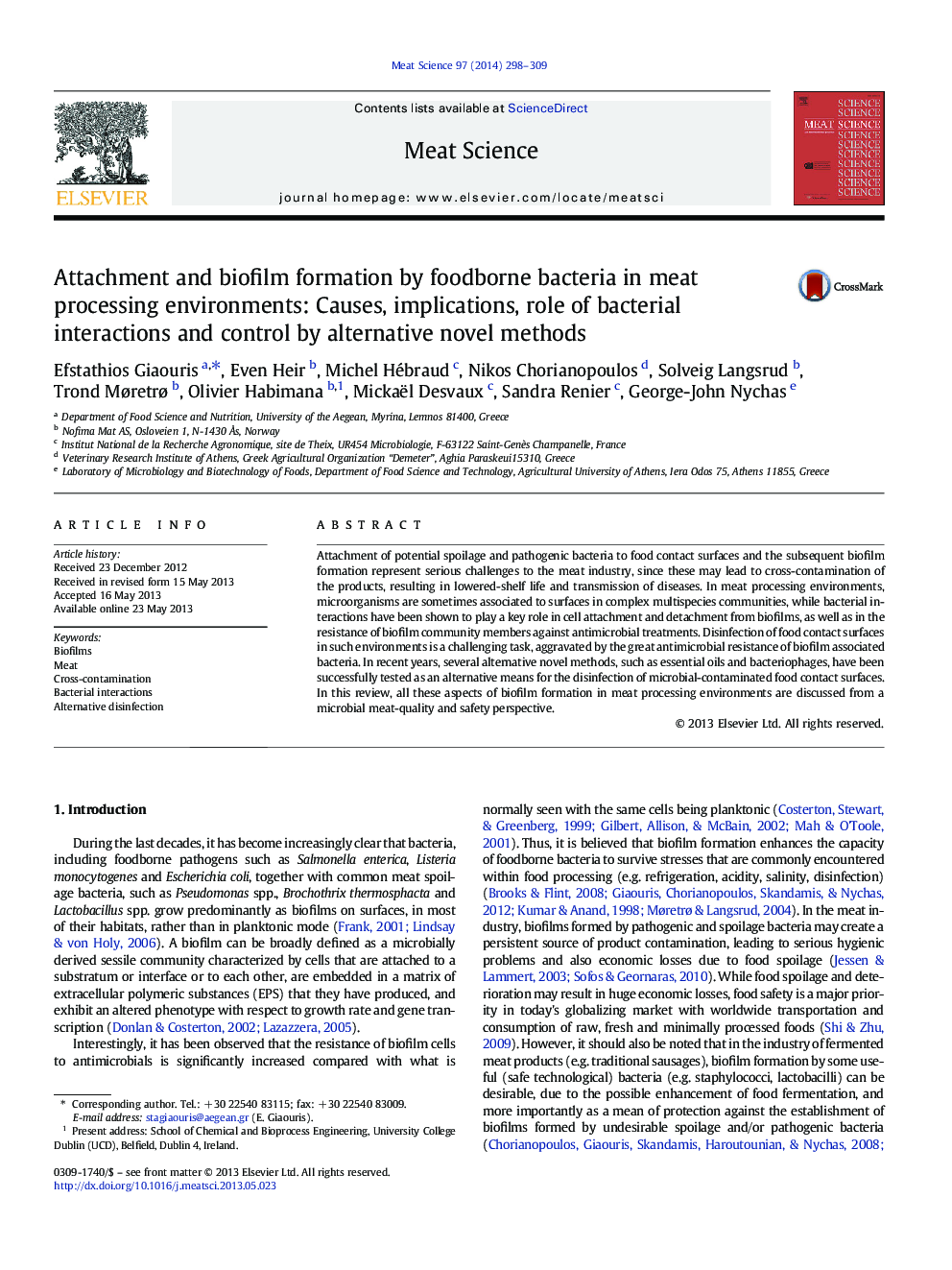| Article ID | Journal | Published Year | Pages | File Type |
|---|---|---|---|---|
| 2450078 | Meat Science | 2014 | 12 Pages |
•Bacteria are able to attach to meat processing surfaces and form biofilms on them.•Biofilm embedded bacteria present increased resistance to antimicrobial treatments.•Detachment of biofilm cells may lead to the cross-contamination of the products.•Bacterial interactions may influence dynamics and resistance of biofilm bacteria.•Novel concepts may be of relevance for the control of biofilms.
Attachment of potential spoilage and pathogenic bacteria to food contact surfaces and the subsequent biofilm formation represent serious challenges to the meat industry, since these may lead to cross-contamination of the products, resulting in lowered-shelf life and transmission of diseases. In meat processing environments, microorganisms are sometimes associated to surfaces in complex multispecies communities, while bacterial interactions have been shown to play a key role in cell attachment and detachment from biofilms, as well as in the resistance of biofilm community members against antimicrobial treatments. Disinfection of food contact surfaces in such environments is a challenging task, aggravated by the great antimicrobial resistance of biofilm associated bacteria. In recent years, several alternative novel methods, such as essential oils and bacteriophages, have been successfully tested as an alternative means for the disinfection of microbial-contaminated food contact surfaces. In this review, all these aspects of biofilm formation in meat processing environments are discussed from a microbial meat-quality and safety perspective.
